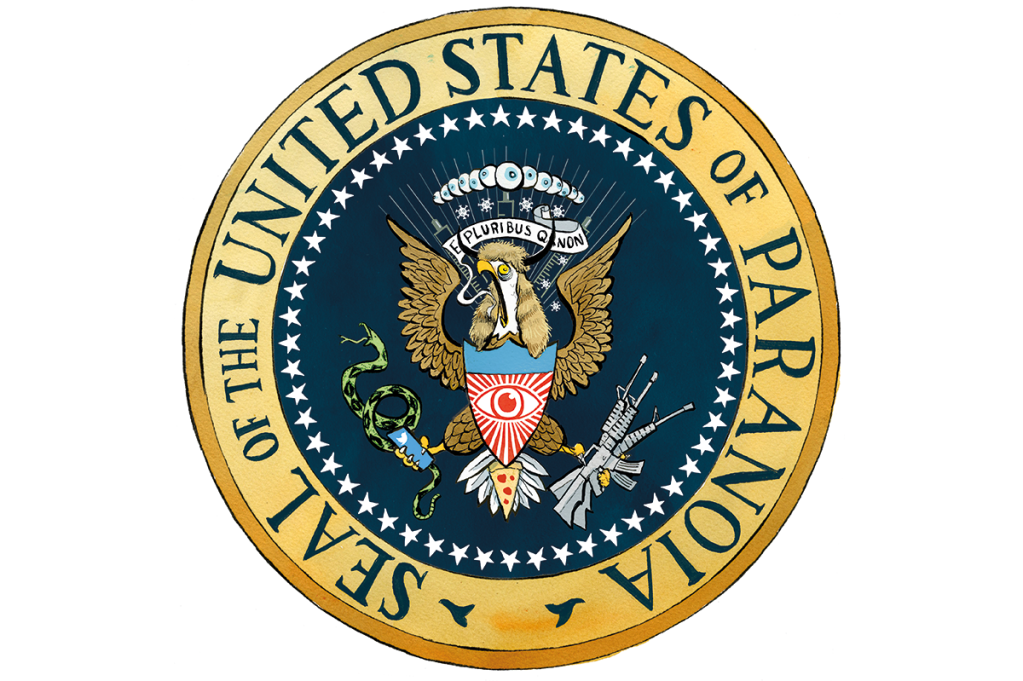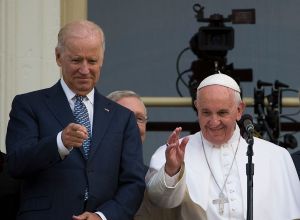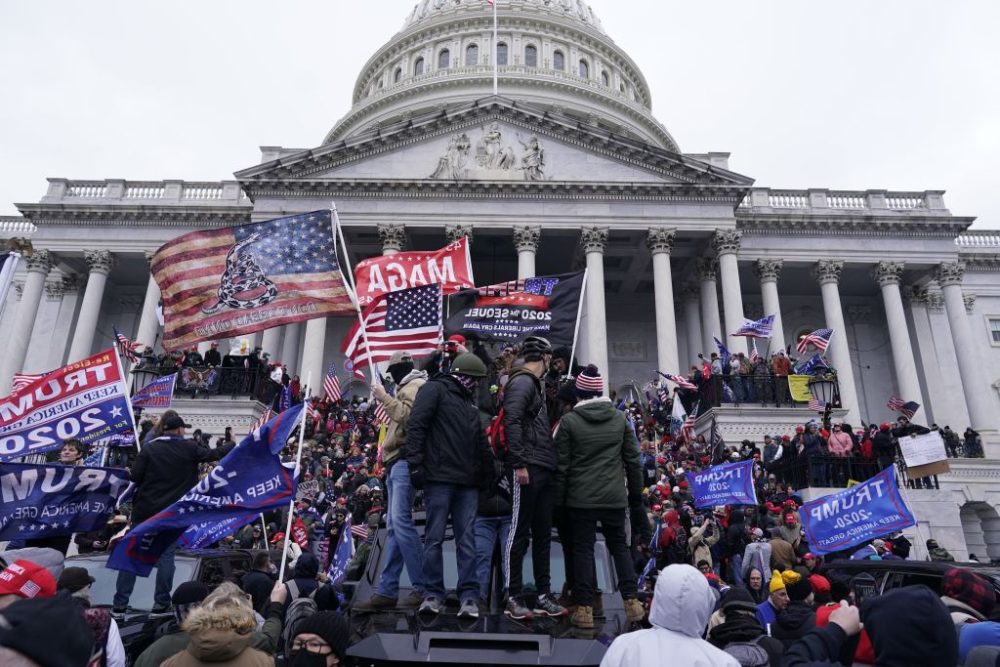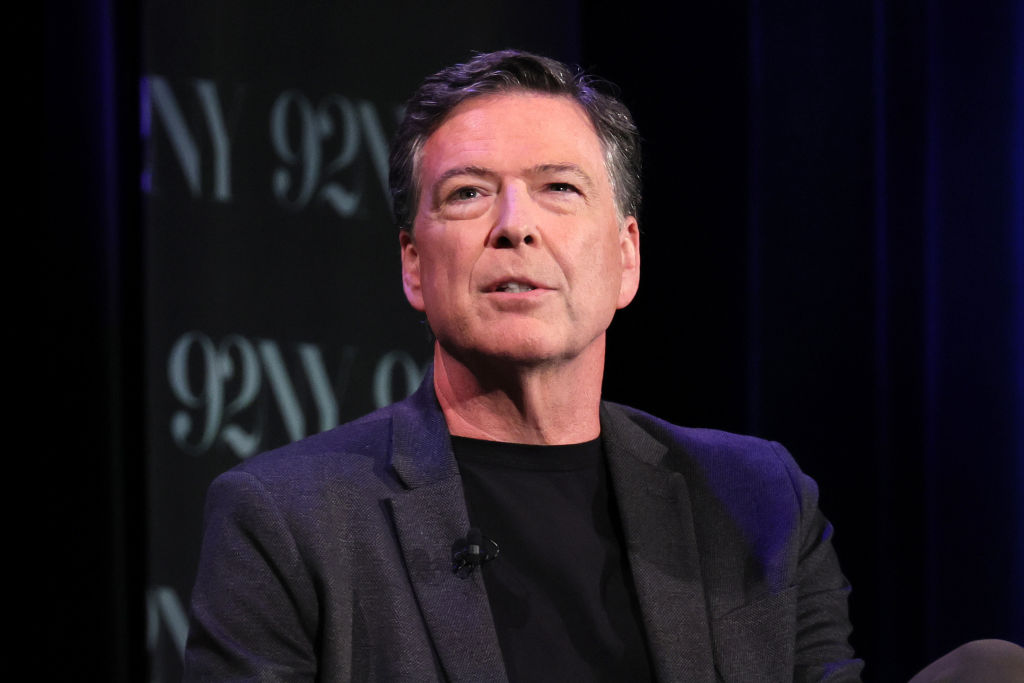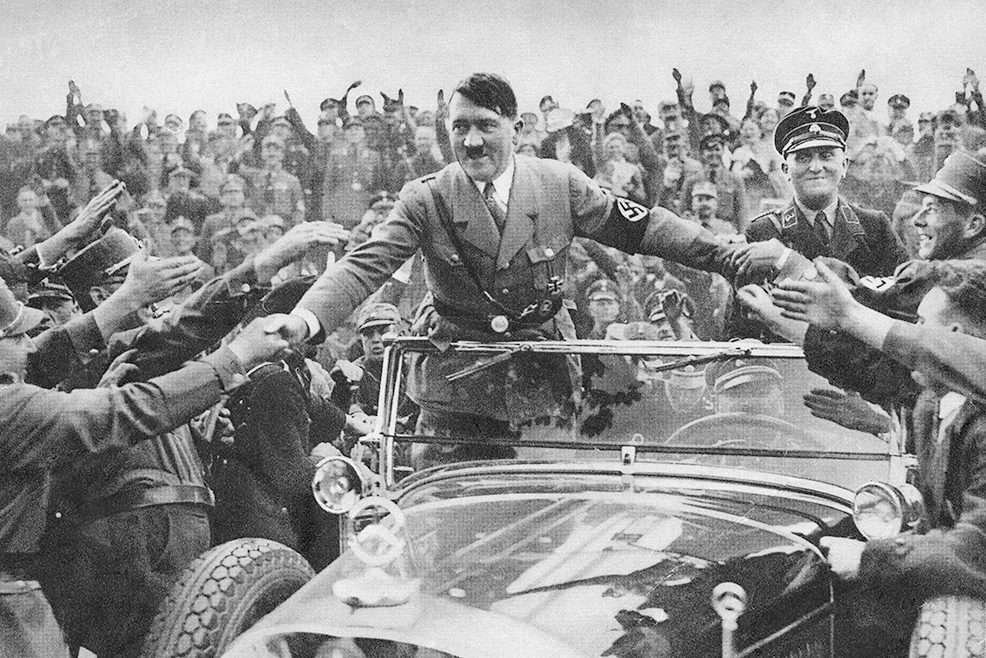On a windy morning thirty years ago, the FBI staged a surprise attack on the Branch Davidian compound near Waco, Texas.
The Branch Davidians were a splinter group of Seventh-day Adventists who followed the apocalyptic preaching of their self-styled prophet, David Koresh. They had been holed up in their ramshackle retreat for fifty-one days. Finally, at 6:02 a.m. on April 19, 1993, tanks broke through the compound’s flimsy walls, firing tear gas at the people inside. The gas was meant to end the standoff by flushing the Davidians out, but Koresh had handed out Army-surplus gas masks. Some of the Davidians took shelter. Others shot at the tanks and federal agents outside.
Hours later, fire leveled the compound. Several Davidians burned to death. Many were buried alive when the tanks knocked walls onto them. Koresh and all but nine of his followers died.
And that is where the full story of Waco begins.
Americans recoiled from the sight of a conflagration that killed seventy-six Davidians, including twenty-five children. In 1999 Attorney General Janet Reno appointed a special counsel, former Missouri senator John Claggett Danforth, to look into what Danforth called “the dark questions” surrounding the incident at Waco. Danforth’s report absolved Reno and the FBI, proving so friendly to the government that both the New York Times and Soldier of Fortune magazine dismissed it as a “whitewash.” Dark questions remained.
I set out to address them in research that led to my new book, Waco Rising: David Koresh, the FBI, and the Birth of America’s Modern Militias. Three questions stood out. What role did Waco play in the rise of today’s right-wing militias? Did the FBI dupe Attorney General Reno into approving the tear-gas attack? Did the government kill Koresh and his followers, or did they kill themselves?
The answers were surprising and troubling.
The Davidians’ trouble with their government began in 1992, when agents of the Bureau of Alcohol, Tobacco and Firearms, or ATF, got a tip that Koresh and his followers were building a private arsenal. The Davidians were converting semiautomatic rifles into fully automatic “assault weapons” without registering the guns and paying the proper fees. That was illegal; offenders could be jailed and fined. But the ATF couldn’t prove it without searching the compound. To land a search warrant, the agency convinced a judge that Koresh was also running a meth lab and sleeping with girls as young as twelve. The first charge was false; the second was true but outside ATF jurisdiction.
ATF agents could have nabbed Koresh when he was out on his daily jog or running errands to Walmart. Instead, they staged an elaborate ruse code-named Operation Trojan Horse. On the last day of February 1993, a pair of tarp-covered cattle trucks barreled up the gravel drive to the Davidians’ front door. Nearly a hundred heavily armed agents in riot gear hustled out and advanced on the compound. Within moments they were in the thick of the deadliest shootout in US law enforcement history.
No one knows who shot first. Soon four ATF agents and six Davidians lay dead. A tense ceasefire led to a two-month standoff that transfixed TV viewers around the nation and the world.
Hundreds of reporters set up camp near the compound. So did souvenir vendors, who hawked merch to tourists on a nearby rise dubbed “T-shirt Hill.” One of the vendors was a decorated Gulf War veteran named Timothy McVeigh.
McVeigh was among the first to consider Waco a cause as well as a town. To him, Koresh and his followers were heroes standing up for their Second Amendment rights against the FBI, which took over the scene after the ATF’s botched raid. The twenty-four-year-old McVeigh sold bumper stickers reading FEAR THE GOVERNMENT THAT FEARS YOUR GUN and A MAN WITH A GUN IS A CITIZEN, A MAN WITHOUT A GUN IS A SUBJECT. “I believe we are slowly turning into a socialist government,” he told a reporter. Federal forces should never be deployed against Americans, he said, predicting that the spectacle of federal agents and combat vehicles arrayed around a religious commune was “only the beginning.”
After the siege ended in flames, McVeigh wore a T-shirt emblazoned FBI — Federal Bureau of Incineration. Two years later, hoping to incite a revolution, he chose the second anniversary of the Waco fire to bomb a federal outpost: on April 19, 1995, his two-ton truck bomb killed 168 people at the Murrah Federal Building in Oklahoma City. The toll included nineteen children who had just arrived at a second-floor daycare center. Like many of the Davidian mothers and children, they died of suffocation or blunt-force trauma as walls fell in around them.
Arrested and charged with murder, McVeigh described the children as collateral damage. He railed about “all the children killed at Waco.” Before his 2001 execution by lethal injection, he said, “Waco started this war.”
Though his attack failed to spur the revolt he hoped for, McVeigh had his admirers. Two of them chose April 19, the shared anniversary of Waco and Oklahoma City, to turn assault rifles on their classmates at Colorado’s Columbine High School. To their dismay, however, Eric Harris and Dylan Klebold came up short of ammunition that morning. They postponed their attack until the following day — April 20, 1999 — when they killed a dozen students and a teacher before shooting themselves.
By then a Texas media gadfly was raising funds to build a chapel on the ruins of the Davidian compound. As a high-school senior in Austin, a ninety-minute drive from Waco, Alex Jones had followed the 1993 siege on TV. Like McVeigh he blamed a murderous government for killing Koresh and his people, but Jones went further. He was insisting, on radio, TV and his InfoWars website, that government plotters had framed McVeigh for the Oklahoma City bombing.
It was the same dark Weltanschauung he later applied to 9/11, the 2012 Sandy Hook school shooting and the January 6 uprising at the US Capitol — all false-flag operations, he claimed.
In 2000, on the seventh anniversary of what he called “the Waco holocaust,” the twenty-six-year-old Jones welcomed visitors to the brand-new chapel that still stands on the site. Denouncing Janet Reno as “the butcher of Waco — Hermann Göring in drag,” Jones shouted, “Never again! No more Wacos in America!”
Today, the church Alex Jones built is one of Waco’s leading tourist attractions. A new Davidian preacher, Charles Pace, hosts Sabbath services and sells some of the same merchandise vendors once hawked on T-shirt Hill. Pace also preaches QAnon theories. Like Jones, he believes the “deep state” was behind the FBI’s tear-gas attack and other evils. In his view, Bill and Hillary Clinton were calculating killers while President George H.W. Bush “was a pedophile and homosexual” who did not die of natural causes in 2018. “They executed him for treason. This will all come out in the near future.”
Pace welcomes visitors from all over the country. Many are militia members making pilgrimages to a hub of what they call the patriot movement. To them, what happened at Waco proves that McVeigh and Alex Jones were right. They believe America’s government was — and is — out to disarm its citizens, to subdue them, control them, and kill them if they won’t submit.
Waco Rising tells a different story. In my view, an unhinged Koresh and a bungling government collided at Waco. America is still picking up the pieces. Aided by sources including Gary Noesner, the FBI’s chief negotiator during the first month of the siege, I learned that Attorney General Reno was manipulated by the FBI. Reno had made her name as a Florida prosecutor waging what was often described as a “crusade” against child abuse. After she became Bill Clinton’s attorney general two weeks into the siege, FBI officials consistently played on her sympathy for the children inside the compound. As the siege dragged on, with the Clinton administration under mounting pressure to end it, they told her Koresh was “beating babies.”
It wasn’t true. The Davidians did practice corporal punishment; Koresh and the other adults spanked children with a wooden paddle they called “the Helper.” Yet none of the Davidian children showed any signs of beatings.
Why did the FBI keep telling Reno that Koresh was “beating babies”?
“You could call it a sales pitch,” Noesner says. He believes his agency “used her background in child-abuse cases” to convince her to approve a surprise attack that would save children.
Her FBI advisors assured Reno that the tear gas they wanted to use was non-toxic, though it was banned for use in warfare. They assured her Koresh would never surrender, though he had sworn he would lead his people out as soon as he finished writing up his interpretation of the coming apocalypse described in the Book of Revelation.
After the tear-gas assault backfired, Reno regretted approving it. “Knowing what I do, I would not do it again,” she admitted.
Bill Clinton sounded callous after the fire at Waco, saying, “I do not think the United States government is responsible for the fact that a bunch of religious fanatics decided to kill themselves.” But he too had second thoughts. In 2005, Clinton called the showdown at Waco one of the worst moments of his presidency.
“We should have waited them out. Janet Reno was new on the job. She got enormous pressure from the FBI,” he said. “It was a mistake, and I’m responsible.”
Members of the patriot movement were unmoved by Reno’s and Clinton’s regrets. Roused by activists including Alex Jones, Oath Keepers founder Stewart Rhodes, and Proud Boys leader Enrique Tarrio, they spent the Obama administration prepping for a war against a government dead-set on rolling back citizens’ right to bear arms. Rhodes was a cowboy-hatted Yale Law graduate who sported an eyepatch after accidentally shooting himself in the left eye. Like many other militia members, he called Waco a key to his “awakening.”
As an FBI agent who infiltrated militia groups in the 1990s told me, “There was hardly one militia member I met who didn’t mention Waco as his awakening.”
The surviving Branch Davidians have mixed feelings about the patriot movement. David Thibodeau, one of the nine who escaped the fire — he dived through a wall as it burned — recalled telling his story to more than 100 men and women in combat gear at a militia training camp in the Florida Everglades. “The patriot community and its militant extremists adopted us,” he said, “turning ‘Waco’ into a war cry.”
Thibodeau supported Oregon rancher Cliven Bundy and his family when they held off federal agents with help from militias in 2014: “When those guys got between the Bundys and the feds, that was power to the people!” He and other Waco survivors are less sanguine about the attack on the Capitol on January 6, 2021, part of an insurgency one militia member called “Waco 2.0.” The Oath Keepers’s Rhodes, convicted of seditious conspiracy for his part in the uprising, faces up to twenty years in prison. The Proud Boys’s Tarrio, currently on trial on similar charges, may face the same fate.
According to Thibodeau, Waco’s survivors have little in common with the rioters of January 6. “Those were Trump supporters,” he says. “To them I’d say, ‘Don’t use Waco as an excuse to do crazy violent shit.’ And as for their savior, Donald Trump? He’s your savior? And they think we followed the wrong guy!”
He and the other survivors keep in touch through a Facebook group, Branch Davidian Survivors Waco. They fend off trolls who rant about the “flame-throwing tanks” that attacked them in 1993. In fact, there were no flame-throwing tanks. The tanks shot tear gas that was toxic but not lethal, forcing mothers and children to take shelter in the concrete-lined “vault” where they died.
Alex Jones and other conspiracists blame the government for killing seventy-six Davidians in 1993, but they are mistaken. While it is clear that the FBI misled Reno and bungled the tear-gas attack, it is equally clear that the Davidians set the fire that burned down their compound. Their voices were caught by listening devices the FBI smuggled into the compound along with cartons of milk for the children. After the tanks began breaking down their walls, they poured fuel around the compound, preparing for a last fiery battle against their oppressors.
“We only light it if they come in, right?” one of them asked Koresh. He had told them that the way to heaven began with a baptism of fire.
The Davidians lit the fire. As it spread, many of them shot themselves or each other in what they considered mercy killings. Koresh died that way, shot through the forehead by his second-in-command.
Thirty years later, some Americans remember Koresh and his Branch Davidians as religious kooks who got what they deserved. Others call them martyrs.
The truth is somewhere in between. What happened at Waco resists boiling down to a T-shirt slogan or tidy conspiracy theory. It was as strange, contingent and heartbreaking as real life.
This article was originally published in The Spectator’s February 2023 World edition.



